Improving Uber Express Pool
Product Background
- Uber Express Pool is a recent addition to the Uber ride hailing application that allows the user to pay less for their ride if they agree to:
- Walk several blocks from their exact pick up location for pick up.
- Allow drop off that is several blocks from their exact drop destination.
- Wait up to 5 minutes for a driver to be assigned to their ride. I’ve also seen this as low as 2 minutes as Uber experiments with different wait / matching periods.
- Rides can often be significantly cheaper than even Uber Pool if the user has a wider tolerance for walking and arrival time.
- The ability for a rider to optimize according to time (Uber X) or money (Uber Pool -> Uber Express Pool) is incredible from a utility maximization standpoint and allows Uber to more optimally match individuals based on their money/time preferences for greater utility for all parties (driver included).
Detailed Discussion & Potential Improvements
Uber Express Pool (UEP) isn’t perfect however, and could be improved in several ways, some of which are relatively simple and provide immediate value to the user, while others will require significant engineering work to solve. My comments below stem only from my experience as a user and do not take into account potential constraints that the Uber team is operating within.
- Optimizing Pick Up & Drop Off Zones for Challenging Terrain
- As anyone who has walked up San Francisco’s steep hilly streets, a pickup and drop off location even one block North or South can present quite a physical challenge.
- Currently, based on my use of the product, Express Pool assumes that a pick up / drop off location is similarly/equally accessible to the user regardless of which direction / distance it is from the user’s current location. In other words, the pick up zone is calculated based on the user’s Current Location + Some (X) Distance from that location, combined with the most optimal pick up points that Uber has determined over time.
- Unfortunately, this does not take into account the terrain/geography of the Pick Up Zone.
- For example, for those of you familiar with San Francisco, the Intercontinental Mark Hopkins (Aka Top of the Mark) is located at the top of very steep hills in nearly all directions. However, as can be seen in the screenshots below, Uber Express Pool doesn’t take this into account.
- It’s pickup zone for Express Pool extends two blocks N/S/E/W even though the 2 blocks south are incredibly steep descents. This can be seen in the Google Street View Images below.
- A potentially readily available solution that would improve this aspect of UEP would be to calculate the estimate elevation change from one point to another, or at the least, use calculated walking time or Walk Scores. This would prevent UEP rides where the rider is going up or down steep terrain.
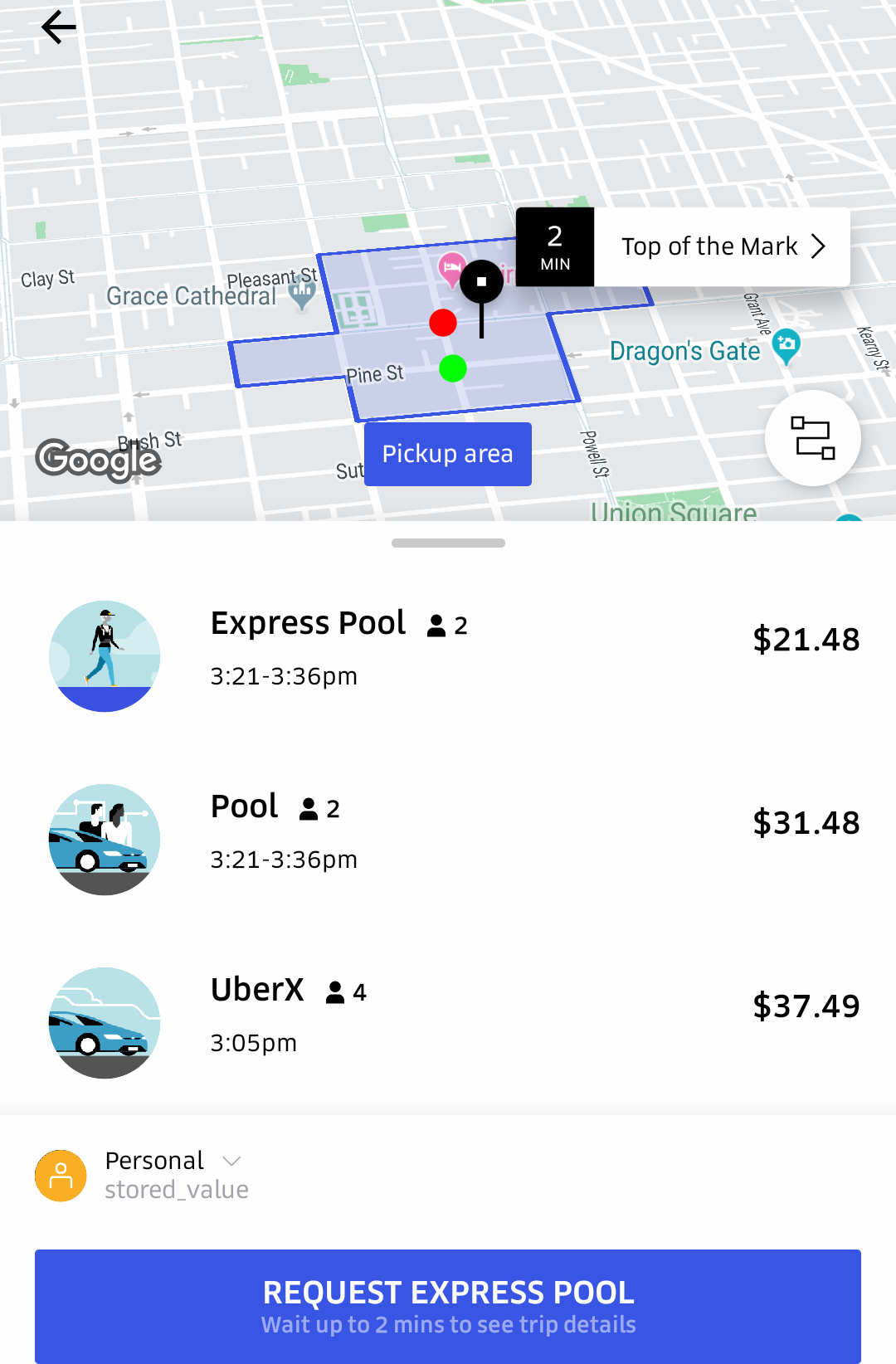

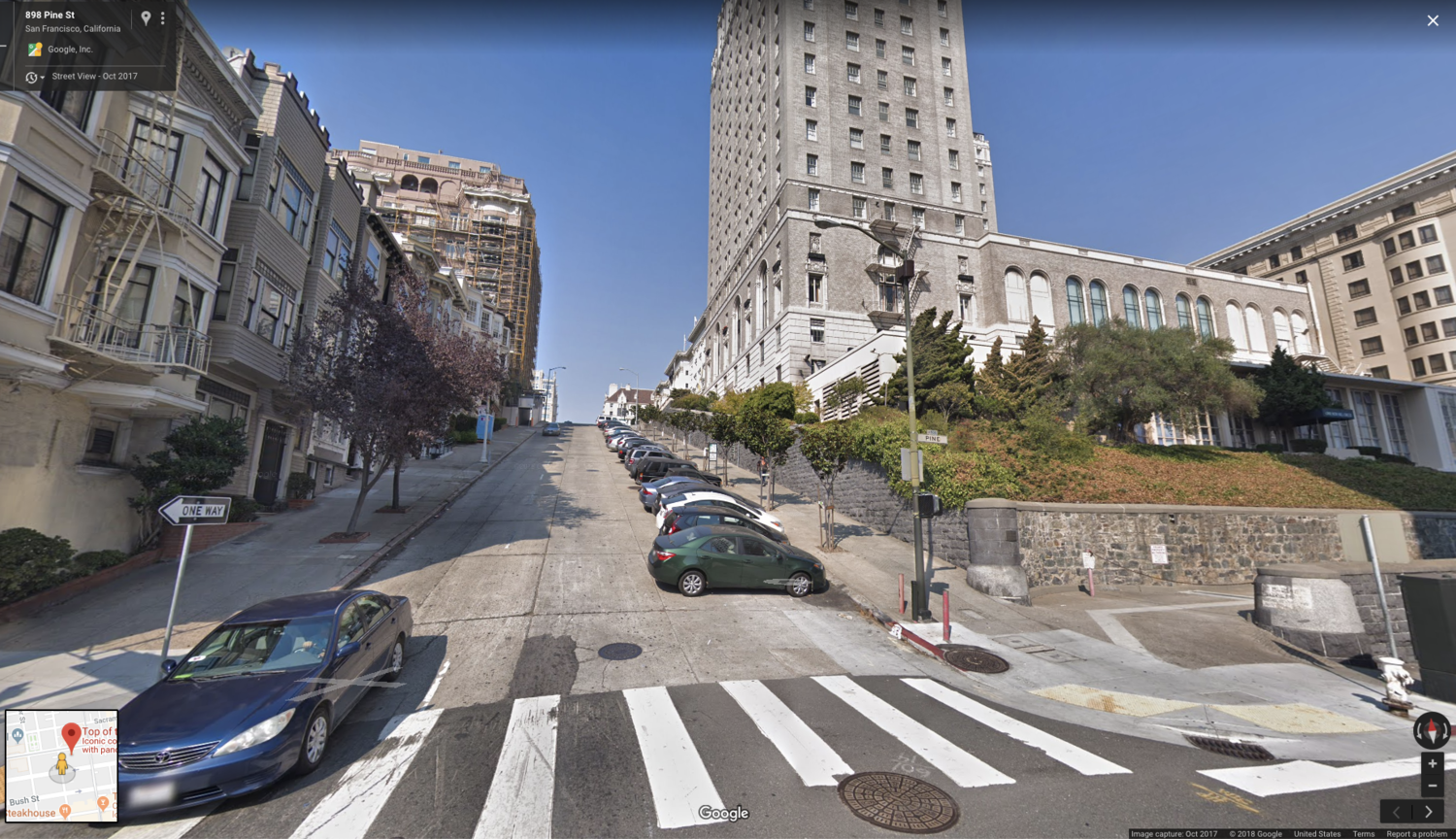
Google Street View facing South on Mason Street (Red Dot) at Left & Google Street View facing North on Mason Street (Green Dot) at Right.
- Optimizing Pick Up & Drop Off Zones w/Additional User Information
- While I understand the objective of requiring the user to provide as little information as possible, UEP could improve the pick up and drop off experience by being more transparent regarding the locations of other passengers or attempting to better group passenger pick up points, particularly in busy areas.
- Example 1 - Airport Pickups - Group by Zone
- While there are now usually multiple airport pick up zones that the user can specify, on my previous UEP ride from the airport, I selected Section 1-2 and my matched Pooler selected zone 3-4, and we were both picked up seperately.
- While I understand that Uber is trying to minimize walking distance with bags at the airport, it is actually far more convenient to group pickups at the same zone due to traffic and loading times.
- Example 2 - Drop Offs - Allow User Input / Select Drop Offs
- While this would likely only apply in the scenario in which a rider is being dropped off and the car is full (I.e. there is no possibility of the car being rerouted to pick up another passenger), it would be a net positive user experience to reveal the drop off location to the user as soon as possible.
- There have been a number of occasions where first hand knowledge has led me to exit the ride earlier than the Drop Off Point because the drop off point is actually sub-optimal to where I ultimately want to go, and it is a better outcome if I exit somewhere else on the route.
- Per the two photos below, it would have been faster for me to exit right as my UEP ride right before turning North on to Columbus, and walked the remaining distance, rather than wait in traffic for the right turn, and left turn.
- Revealing the drop off point sooner, and allowing me to make a choice of a drop off point that is already on the route, would result in a shorter ride for me, shorter ride for my fellow Poolers and more revenue for the driver and Uber.
- This logic could also be applied to user selectable Pick Up points.
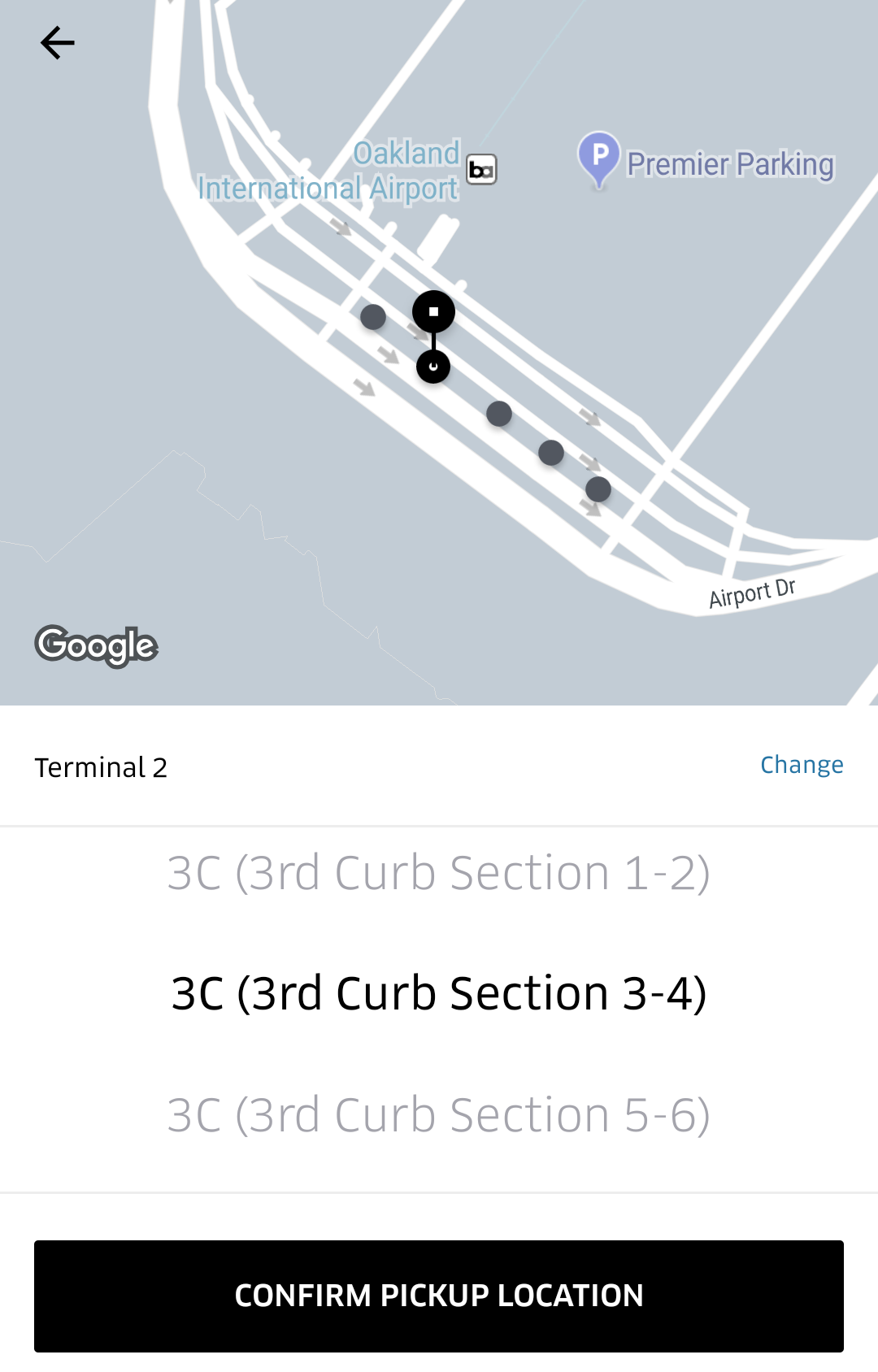
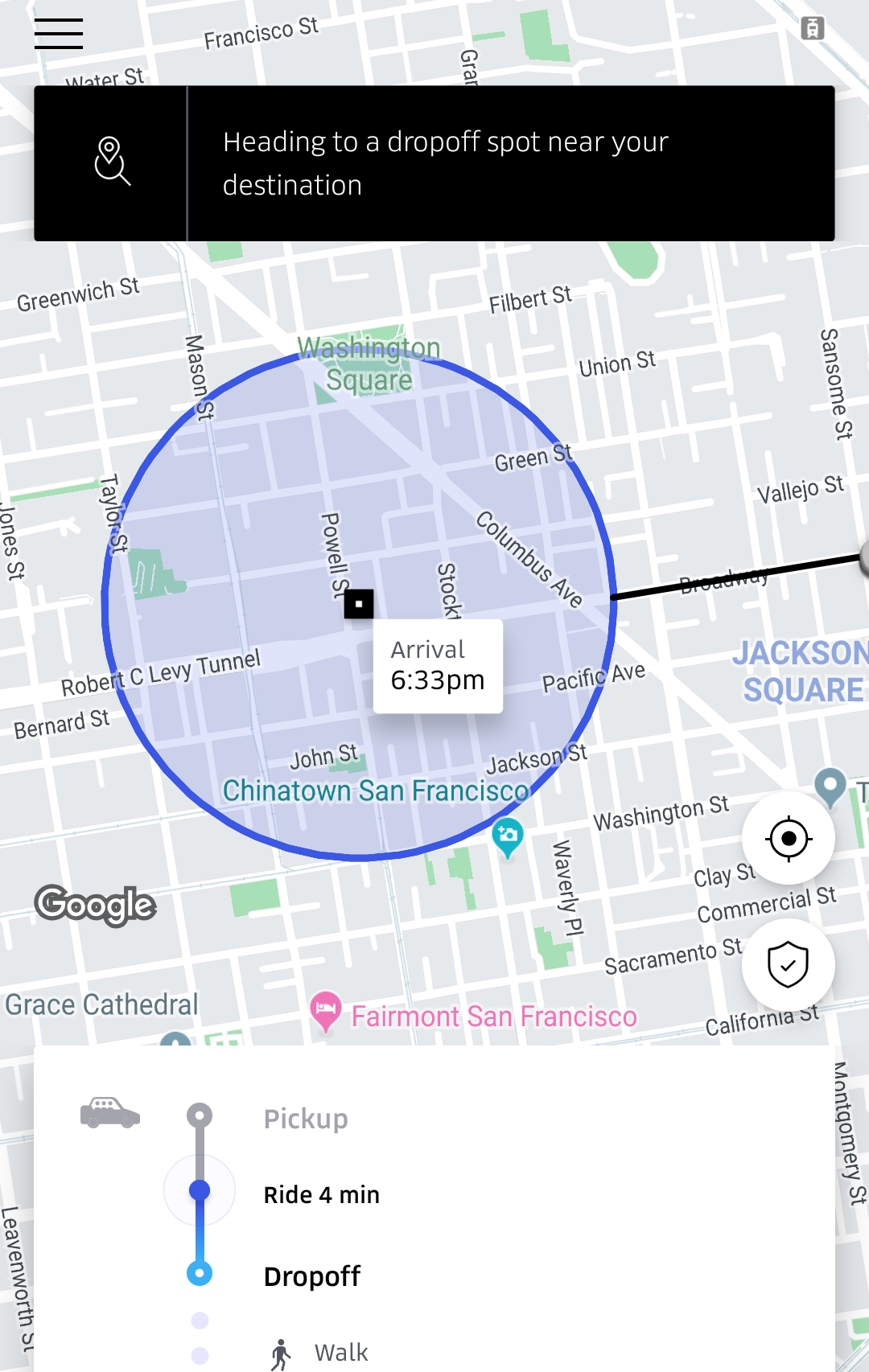
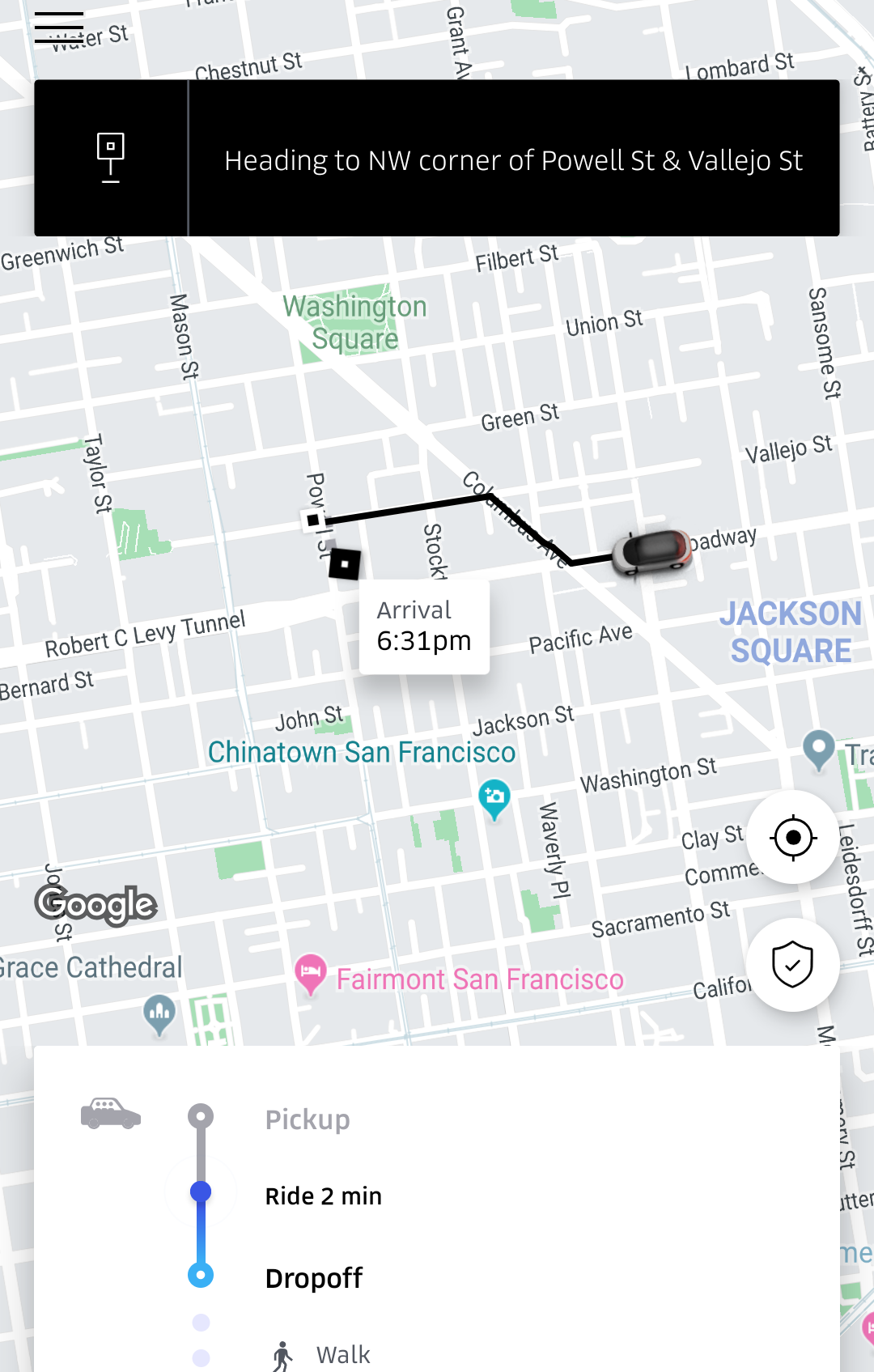
(1) OAK Pickup Zones (2) UEP Drop Off Zone (3) UEP Drop Off Point Reveal
- Optimizing Route Pricing by Allowing Uber X / Non Shared Rides to Add Riders During Ride
- Another potential route to increase the number of pool rides would be allowing riders to select non-shared rides initially (Uber X / Black / Etc.) and if an individual is an optimal match for the route that the original rider is traveling, allow that rider to be added to the Uber X ride and give the original rider a discount just as they would have had if they had selected Uber Pool to begin with.
- This would add liquidity to the pool of potential drivers for Uber Pool, as well as add certainty to the route when matching Uber Pool riders with potential drivers.
- Optimizing Route Pricing by Allowing Shared Rides to “Upgrade” To Non-Shared Rides During Ride
- Another potential route for increasing revenue would be to allow Pool/Shared rides to “Upgrade” to a non-shared ride after being picked up.
- It could be that after pick up, those users realize they are later than they’d like, and would be prime targets for upselling to a non-shared ride that gets them there faster.